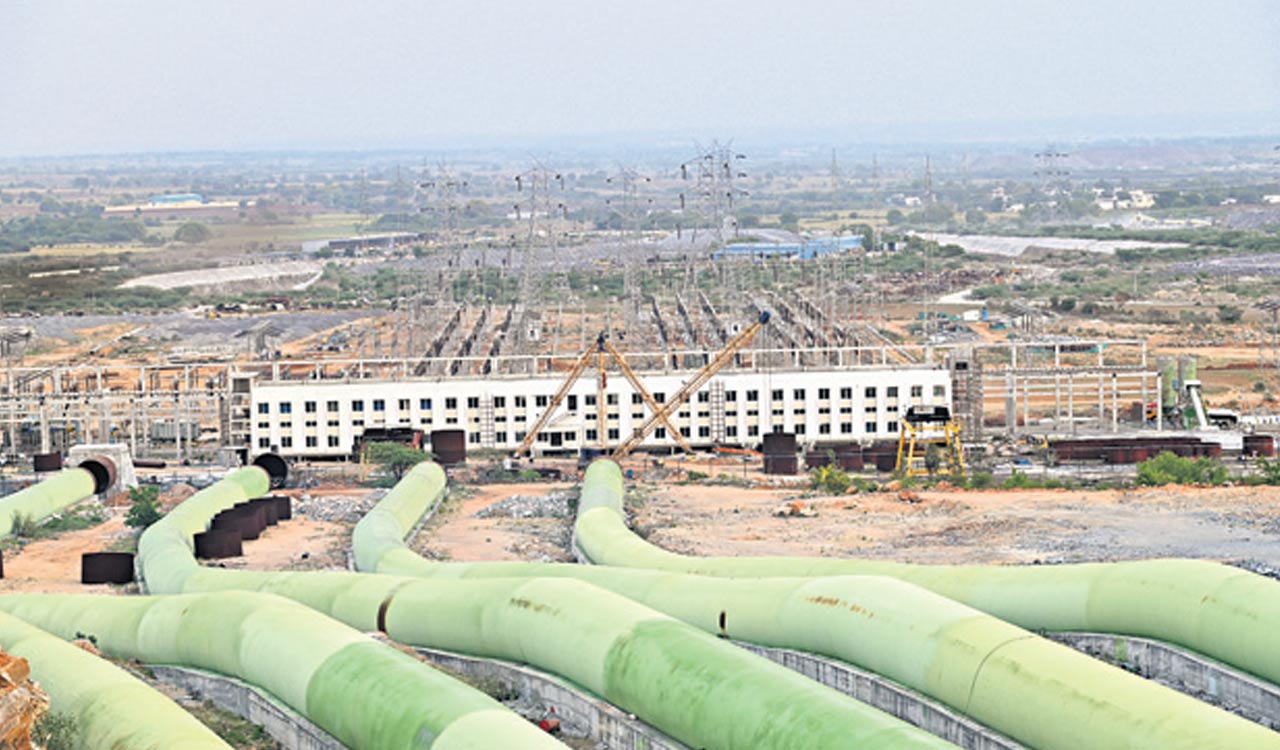In all, 31 of such monstrous pumps will be put to operation once four of the five stages of the Palamuru Lift Irrigation Scheme become functional
Published Date – 08:33 PM, Fri – 15 September 23

Hyderabad: One of the world’s biggest innovative engineering feats, the Palamuru Lift Irrigation Scheme (PLIS), is all set for the critical wet run. It has completed the fortnight long end-to-end test of an altogether new pumping model being put into operation for the first time in the world.
India had used the highest capacity pumps of 139 MW in the Kaleshwaram Lift Irrigation Scheme (KLIS) for drawing water from Godavari turning the project into the lifeline of north Telangana and they were dubbed ‘Bahubali’ pumps.
“The kind of pumps we are using in the Palamuru Ranga Reddy Lifts are the first of their kind in the world. Nowhere have pumps of 145 MW capacity been tried out so far. The State takes the credit of installing the landmark water lifting systems in the PRLIS,” Project Chief Engineer M A Hameed Khan said.
In all, 31 of such monstrous pumps will be put to operation once four of the five stages of the scheme become functional. Each one of them can indeed be termed as the ‘Baap of Bahubali’ pumps as they are called by officials of the entire engineering stream involved in the project construction.
It is a moment of pride not only for the State but for the country as well with the giant pumps being designed and manufactured by Indian public sector unit BHEL. At every stage, a standby pump of the same capacity has been installed for meeting exigencies during the 60-day period of their operation for pumping 90 tmc of flood water of Krishna from the foreshore of Srisailam reservoir. Each of the pump will be lifting 3200 cusecs adding to the desired drawl of 1.5 tmc a day and 90 tmc in 60 days.
“We need to use all the superlatives to present the enormity of its size and benefits involved in the project. The underground marvel has not only the biggest pumping systems of the world, but the largest surge pool of the continent. Completing the implementation of the first stage well on time by ensuring quality in every stage of work will need compliance of the stipulated processes. There is no compromise on this aspect,” affirmed the Chief Engineer, the proponent of the project and his team of senior engineers.
The project, intended to quenching the thirst of the parched Palamuru region under its first component, will help provide 7.15 tmc of water for meeting the drinking water needs. It has a provision of 79 tmc for irrigation. Once the final clearances are obtained, the pace of works on the irrigation component will be stepped up.
The project would support industrial needs as well by about three TMC after it becomes fully functional on the completion of the canal network.
“Enormous amount of hard work and perseverance have made it possible. The project stone was laid after three decades of debating on the pros and cons of a lift scheme to quench the thirst of the Palamuru people, a dry zone that reeled under drought conditions for decades. Giving Krishna water to Palamuru was only a wishful thinking of the erstwhile rulers of the undivided state,” officials said.
Chief Minister K Chandrashekhar Rao made it possible after Telangana attained Statehood. He switched over to action mode making a distinction between wishful thinking and possibility thinking. It became a reality today as his dream was backed by a implementable plan of action, summed up a team of retired engineers (from the Telangana Retired Engineers Association), Ganapati Rao, Srinivas, Murali Manohar Rao. The key to the success was the strong possibility mindset of the Chief Minister, they added.


